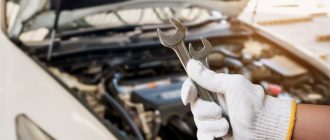Understanding the Repair Process: From Estimate to Completion
Completing repairs on your home or car can be a complex process that requires careful planning and understanding. In order to successfully navigate this process, it is important to have a clear understanding of the various steps involved, from obtaining an initial estimate to the final completion of the repairs. By familiarizing yourself with this process, you can ensure that you are well-equipped to manage any necessary repairs and make informed decisions along the way.
The first step in the repair process is obtaining an estimate. This is an evaluation of the damage or issue that needs to be addressed, which is typically provided by a professional repair specialist or contractor. The estimate will include a breakdown of the costs involved, including labor, materials, and any additional fees. It is important to carefully review the estimate to ensure that you understand the scope of the repairs and the financial implications.
After receiving the estimate, the next step is to decide whether to proceed with the repairs. This decision will depend on a variety of factors, including the urgency of the repairs, your budget, and the extent of the damage. It may be helpful to consult with other professionals or seek multiple estimates to gather different perspectives and options. Once you have made the decision to move forward, you can then proceed to the next phase of the process.
The actual repair process can vary depending on the type and scope of the repairs needed. It may involve sourcing materials, hiring contractors or specialists, and coordinating schedules and logistics. Throughout this phase, it is important to maintain open lines of communication with all parties involved to ensure the smooth progress of the repairs. Regular updates and ongoing dialogue can help to address any unexpected issues or changes that arise.
Finally, the repair process will be completed once the repairs have been successfully executed and deemed satisfactory. It is important to conduct a thorough inspection and review of the completed work to ensure that it meets your expectations and any applicable standards or regulations. Once you are satisfied with the repairs, you can then consider the process complete and enjoy the peace of mind that comes with a job well done.
Initial Assessment and Estimation
Understanding the repair process begins with an initial assessment and estimation. When you bring in your damaged vehicle, a trained technician will conduct a thorough inspection to assess the extent of the damage. This assessment includes both visible and underlying damage that may not be immediately apparent.
The technician will take detailed notes and document the damage, noting any areas that require repair or replacement. They will also assess the overall condition of the vehicle to determine if there are any pre-existing issues that need to be addressed.
Once the initial assessment is complete, the technician will provide you with an estimate for the repairs. This estimate will outline the cost of labor, parts, and any additional materials that will be needed to complete the repairs. It will also provide an estimated timeline for the completion of the repairs.
It’s important to note that the initial estimate is just that – an estimate. As the repair process progresses, additional damage may be discovered, or the extent of the existing damage may change. In these cases, the technician will communicate any necessary updates to the estimate and seek your approval before proceeding with additional repairs.
By understanding the initial assessment and estimation process, you can have a clearer understanding of the scope of the repairs needed and the associated costs. This allows you to make informed decisions and ensures that there are no surprises along the way.
Preparations for Repair
Before starting the repair process, it is important to make the necessary preparations. These preparations will help ensure that the repair is completed smoothly and efficiently.
First, it is important to obtain a detailed estimate for the repairs. This estimate will provide a clear understanding of the scope of the repair work that needs to be done. It will also help in planning the budget and allocating resources accordingly.
Once the estimate is obtained, it is necessary to gather all the required materials and tools for the repair. This includes obtaining the necessary replacement parts, tools, and equipment that will be needed to complete the repair process.
In addition to gathering the required materials, it is also important to allocate the necessary time for the repair. Depending on the complexity of the repair, it may take a few hours or several days to complete. It is essential to allocate enough time in order to avoid rushing the repair process and potentially making mistakes.
Furthermore, it is important to ensure that the repair area is clean and free from any obstacles that may hinder the repair process. This includes removing any unnecessary items or debris from the area and creating a safe and organized workspace.
Lastly, it is important to have a clear understanding of the repair process itself. This includes understanding the steps involved, the required techniques, and any special considerations or precautions that need to be taken. Having this understanding will help ensure that the repair is completed correctly and effectively.
By making these preparations before starting the repair process, it will help ensure a smooth and successful repair. It will also help minimize any potential delays or issues that may arise during the repair process.
Obtaining Necessary Permits
In the process of understanding the repair process, it is important to be aware of the necessary permits that may be required. When planning a repair or renovation project, obtaining the appropriate permits ensures that the work is done legally and up to code.
The first step in obtaining necessary permits is to determine what type of repair or renovation is being done. Different permits may be required for different types of work, such as electrical, plumbing, or structural repairs. It is important to check with local building authorities to determine which permits are needed.
Once the necessary permits are identified, the next step is to complete the application process. This may involve submitting detailed plans or drawings of the proposed repair or renovation, as well as paying any required fees. The application may also require information about the repair contractor or the individual performing the work.
After the application is submitted, it will be reviewed by the building authorities. This review process ensures that the proposed repair or renovation meets all applicable building codes and regulations. If any issues or concerns are identified, the applicant may be required to make changes or provide additional information.
Once the application is approved, the permit will be issued. This permit should be prominently displayed at the repair site and inspections may be required at various stages of the repair process to ensure compliance with building codes. Failure to obtain the necessary permits can result in fines or legal consequences.
| – Determining the type of repair or renovation being done |
| – Checking with local building authorities for required permits |
| – Completing the application process, including submitting plans and paying fees |
| – Reviewing the application by building authorities to ensure compliance |
| – Displaying the permit at the repair site and getting inspections as required |
In conclusion, understanding the process of obtaining necessary permits is an important part of the overall repair process. By following the required steps and obtaining the appropriate permits, individuals can ensure that their repairs or renovations are done legally and up to code.
Order and Delivery of Materials
As part of the understanding, completion, and process of a repair project, ordering and delivery of materials is a crucial step. Once the estimate has been approved by the client, the repair team will proceed to order the necessary materials to complete the project.
The order process typically involves identifying the specific materials required, including items such as replacement parts, paint, and tools. The repair team will carefully review the estimate and create a detailed list of materials needed, taking into account the specific requirements of the project.
Once the materials have been identified and the order has been placed, the next step is their delivery. The repair team will work closely with suppliers to ensure timely and efficient delivery of the materials to the repair site. This is important as any delays in delivery could impact the overall timeline of the repair process.
Upon arrival of the materials, the repair team will carefully inspect them to ensure they match the specifications and quality required for the project. Any discrepancies or issues will be promptly addressed with the supplier to ensure that only the correct and high-quality materials are used for the repair.
| 1. Identify the required materials based on the estimate. |
| 2. Create a detailed list of materials needed. |
| 3. Place the order with trusted suppliers. |
| 4. Ensure timely and efficient delivery. |
| 5. Inspect the materials upon arrival. |
| 6. Address any discrepancies or issues with the supplier. |
By efficiently managing the order and delivery of materials, the repair team can ensure that the necessary resources are available when needed to complete the repair project. This helps maintain a smooth workflow and minimizes any delays or disruptions in the overall repair process.
Demolition and Removal of Damaged Components
Understanding the repair process is essential when dealing with any type of damage. One crucial step in this process is the demolition and removal of damaged components.
Demolition
Demolition is the process of taking apart or dismantling damaged elements of a structure or property. It involves carefully removing affected materials to create a clean slate for the repair work to begin.
During the demolition phase, it is important to assess the extent of the damage and identify the components that need to be removed. This can range from removing drywall and insulation to taking out entire sections of a building.
Removal
Once the damaged components have been identified, the next step is their removal. This may include anything from clearing out debris and disposing of it properly to extracting and replacing larger elements.
Proper removal ensures that all damaged materials are completely eliminated, reducing the risk of further problems down the line. It also allows for a fresh start, enabling the repair process to proceed smoothly.
In conclusion, understanding the demolition and removal of damaged components is crucial in the repair process. It sets the stage for the subsequent repair work, ensuring a thorough and effective restoration.
Repair and Restoration
Understanding the repair process is crucial from the initial estimate to the final completion. Whether you are dealing with minor damage or extensive repairs, it’s important to have a clear understanding of what is involved in the repair and restoration process.
When it comes to repairs, the first step is to assess the damage and provide an estimate. This involves evaluating the extent of the damage and determining the best course of action for repairs. An experienced technician will carefully inspect the area and provide an accurate estimate so that you can make an informed decision about moving forward.
Once the estimate is approved, the repair process can begin. This typically involves repairing or replacing damaged components, such as replacing broken parts or fixing structural damage. The goal is to restore the damaged area to its original condition, ensuring that it is safe and functional.
During the repair process, it is important to communicate with the repair team and ask any questions you may have. They can provide updates on the progress of the repairs and address any concerns you may have along the way.
After the repairs are completed, a final inspection is conducted to ensure that everything has been properly repaired and restored. This ensures that the repaired area meets safety standards and is ready for use.
Understanding the repair and restoration process can help you navigate through the entire process, from the initial estimate to the final completion. By having a clear understanding of what to expect, you can make informed decisions and ensure that your repairs are completed to your satisfaction.
Inspections and Quality Checks
During the repair process, inspections and quality checks are crucial steps that ensure the work is done properly and meets the required standards. These inspections and checks are carried out at various stages, from the initial estimate to the final completion of the repair.
Estimate Inspection:
Before any repair work begins, a thorough inspection is performed to assess the damage and determine the estimated cost of the repair. This inspection involves examining the affected area and identifying any underlying issues that may need to be addressed.
Pre-Repair Inspection:
Prior to starting the repair, a pre-repair inspection is conducted to verify that all necessary materials and equipment are available. This ensures that the repair work can be carried out efficiently and in a timely manner.
In-Process Inspection:
During the repair process, regular in-process inspections are conducted to monitor the progress and quality of the work. These inspections involve verifying that the repair techniques and materials being used are appropriate and adhering to industry standards.
Final Inspection:
Once the repair is completed, a final inspection is done to ensure that all repairs have been carried out properly and that the repaired area meets the required standards. This includes checking for any defects or imperfections and making any necessary adjustments.
Quality Checks:
In addition to inspections, quality checks are also performed throughout the repair process. These checks involve assessing the overall quality of the repair work, including the durability and functionality of the repaired area. This helps ensure that the repair will stand the test of time and meet the customer’s expectations.
| Estimate Inspection | Assess the damage and determine the estimated cost of repair |
| Pre-Repair Inspection | Verify availability of necessary materials and equipment |
| In-Process Inspection | Monitor progress and quality of the repair work |
| Final Inspection | Ensure all repairs have been carried out properly and meet required standards |
Final Touches and Clean-up
Once the repair process is approaching completion, the final touches and clean-up are done to ensure that everything is in order. This stage is crucial as it allows the repair team to inspect the repaired area thoroughly and make any necessary adjustments.
During the final touches, the repair team will carefully examine the repaired area to ensure that it matches the original estimate and that all repairs have been completed to a high standard. This includes checking for any imperfections or areas that may require additional attention.
Attention to detail is paramount during this stage. The repair team will pay close attention to matching paint colors, ensuring that the repaired area seamlessly blends with the rest of the vehicle. Additionally, they will inspect for any remaining damage or issues that need to be addressed.
Once all repairs have been satisfactory completed and the repaired area meets the estimate, the final clean-up process begins. This involves removing any debris, dust, or other remnants from the repair work. The clean-up ensures that the repaired area is left in a pristine condition.
The final touches and clean-up stage brings the repair process to its completion, leaving behind a professionally repaired vehicle that is ready to be returned to the owner.
Completion and Customer Satisfaction
Understanding the repair process is essential for ensuring both completion and customer satisfaction. Once an estimate has been agreed upon, the repair work can begin. Throughout the process, it is important to keep the customer informed and involved, ensuring that their needs and expectations are met.
During the repair process, it is crucial to communicate any changes or additional work that may be necessary. This not only helps to manage expectations but also helps to build trust with the customer. By providing regular updates on the progress of the repair, the customer will feel involved and informed.
Upon completion of the repair, it is important to thoroughly inspect the work to ensure that it meets the agreed-upon standards. This includes not only the quality of the repair itself but also cleanliness and any other factors that may impact customer satisfaction.
Customer satisfaction is key to the success of any repair process. By understanding the customer’s needs and expectations from the beginning, and ensuring open communication throughout, the repair process can be completed to the customer’s satisfaction.
Q&A:
How long does the repair process usually take?
The length of the repair process can vary depending on the extent of the damage and the availability of parts. In some cases, it may only take a few days, but in more complex cases, it could take several weeks.
Will my insurance cover the cost of the repairs?
Whether your insurance will cover the cost of repairs depends on your specific policy. It’s best to contact your insurance provider to discuss your coverage and any deductibles that may apply.
Do I have to take my vehicle to a specific repair shop?
Your insurance company may recommend a preferred repair shop, but you are generally not obligated to use that specific shop. It’s important to choose a reputable repair shop that you trust and feel comfortable with.
Can I still drive my car while it is being repaired?
In some cases, you may be able to drive your car while it is being repaired, especially if the damage is not severe. However, it’s best to consult with your repair shop or insurance provider to determine if it is safe to do so.
What happens if additional damage is found during the repair process?
If additional damage is found during the repair process, the repair shop will usually contact you and your insurance provider to discuss the additional repairs and any associated costs. It’s important to stay in communication with the repair shop and insurance company throughout the process.





